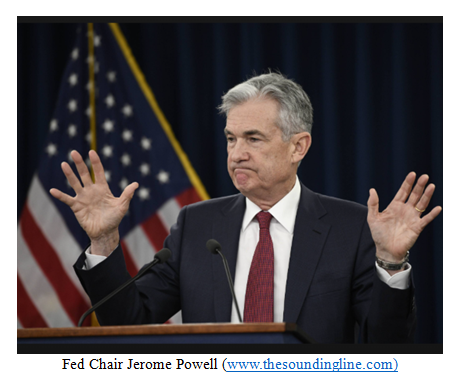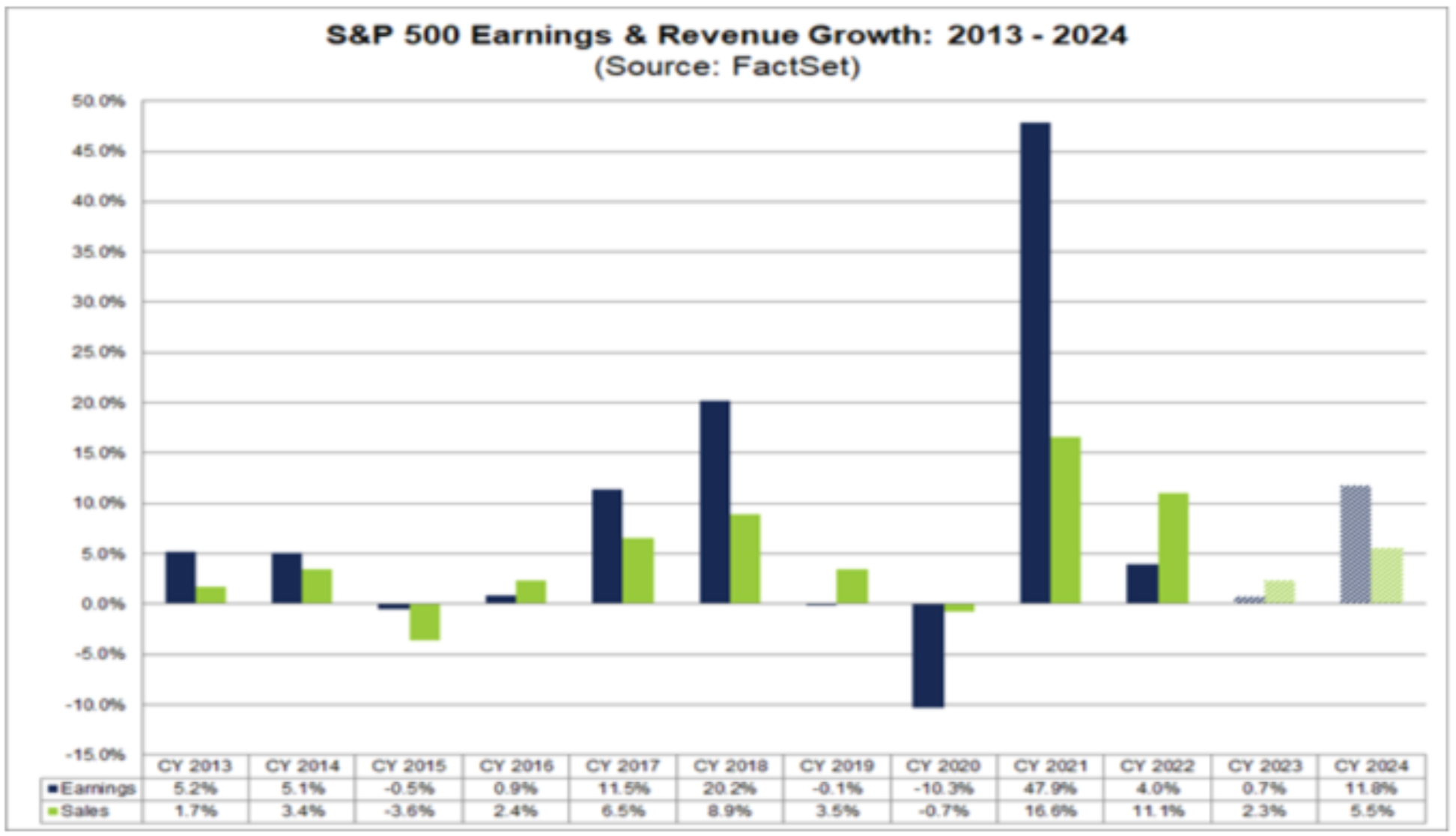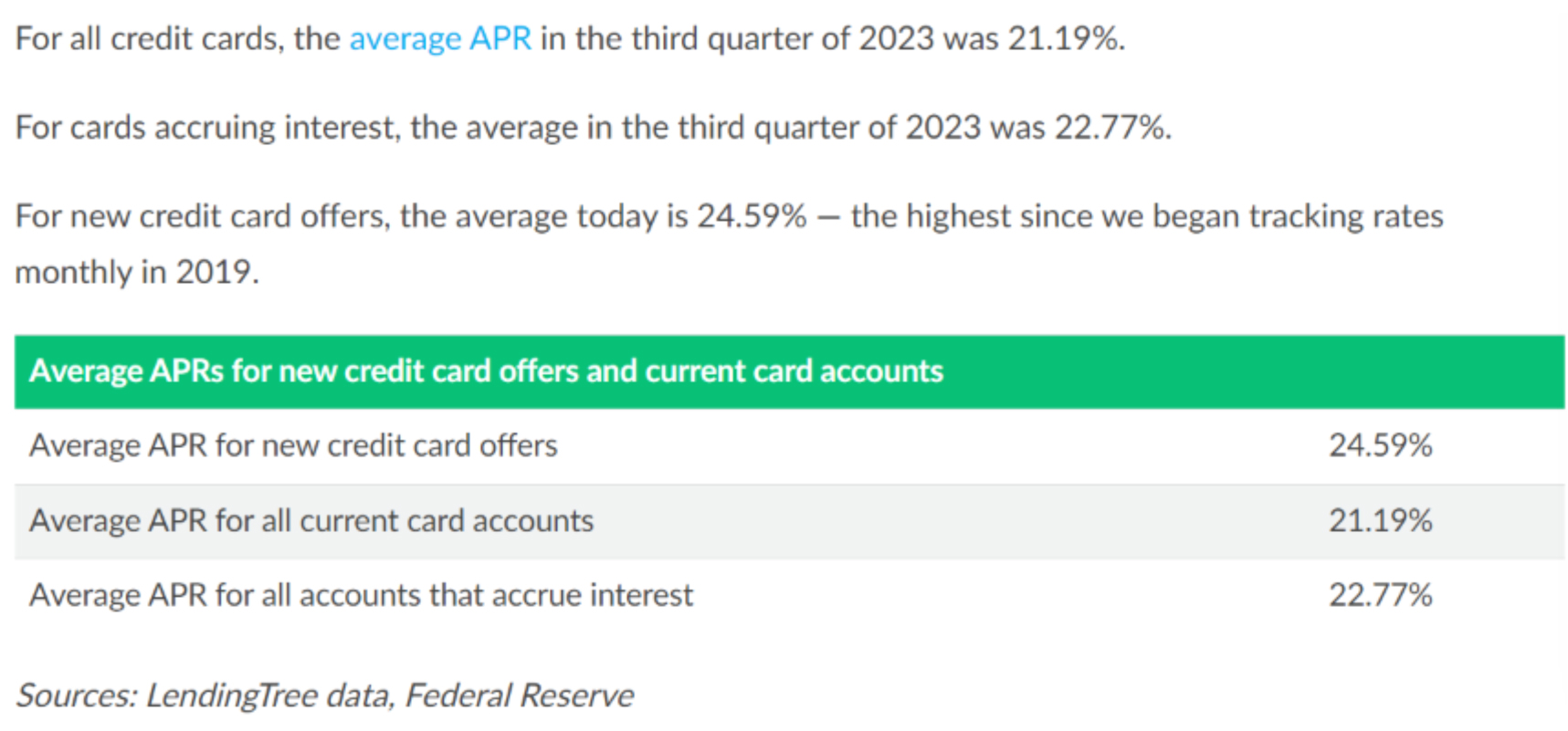by Bryan Perry
December 27, 2023
In this coming year, it will be challenging to find a rallying cry as energetic as the AI-related surge of 2023. For most of 2023, tech stocks led the way, but in the closing weeks of the year, the market broadened out to include even the lagging small caps and regional banks, thanks to a Fed pivot announced by Chair Jerome Powell at the December 13 Federal Open Market Committee (FOMC) meeting, in which Fed officials released their projections of perhaps three rate cuts next year and three or four more in 2025.

Powell’s dovish pivot came as a surprise, a 180-degree reversal of his “higher-for-longer” narrative that the Fed had embraced going into the mid-December meeting, as voiced by several Fed officials. The news that day triggered an amazing rally within the bond market that drove yields on the benchmark 10-year Treasury bond from near 5% down to 3.8% in six weeks, creating the fuel to push stocks to record highs.

Graphs are for illustrative and discussion purposes only. Please read important disclosures at the end of this commentary.
This fourth-quarter rally will be a hard act to follow. Based on the capital gains logged by many investors during the recent wave-up for stocks, it is likely that the front end of January could see some broad selling pressure as investors book those gains – based on the idea that the market has pulled forward and priced-in future expectations. This pullback could be one of the more pronounced “buy the rumor, sell the news” setups facing investors in the last week of 2023, which technically defines the year-end Santa Claus rally.
Assuming there is material selling pressure early in January, such a correction will be constructive for the market. Many of the market’s leading stocks and sectors are technically extended and due for some consolidation. Being that fourth-quarter earnings season comes into its fullness during the third week of January, the quintessential setup is for the best-of-breed stocks and sectors to pull back in the first half of January. This backing-and-filling will position the market to constructively build on its heady Q4 gains.
Straight up moves for markets invite elevated levels of volatility and shakeouts. The ideal investing landscape is one of a stair-step pattern – a move higher, a lateral consolidation, then a new move higher. This price action can only be supported by further confirmation of lower future inflation trends, rising corporate sales and earnings growth, and a series of Fed rate cuts – which the market now expects.
The forward 12-month P/E ratio for the S&P 500 is now 19.3, which is slightly above the 5-year average (18.8) and 10-year average (17.6). Beings the market is priced at the upper end of the 10-year range, this valuation must be supported by accelerating growth. Based on FactSet guidance, this should be the case.
“Despite concerns about a possible recession next year, analysts expect the S&P 500 to report double-digit earnings growth in CY 2024. The estimated (year-over-year) earnings growth rate for CY 2024 is 11.8%, which is above the trailing 10-year average (annual) earnings growth rate of 8.4% (2013 – 2022). On a quarterly basis, analysts are expecting the highest earnings growth to occur in Q4 2024. For Q1 2024 through Q3 2024, analysts are projecting earnings growth of 6.8%, 10.8%, and 9.0%, respectively. For Q4 2024, analysts are projecting earnings growth of 18.2%.”

Graphs are for illustrative and discussion purposes only. Please read important disclosures at the end of this commentary.
“All eleven sectors are predicted to report year-over-year earnings growth in CY 2024. Five of these sectors are projected to report double-digit growth led by the Health Care, Communication Services, and Information Technology sectors.” (FactSet, by John Butters, December 11, 2023)
Despite concerns about geopolitical turmoil and the presidential elections, assuming this set of earnings growth projections is even close, one can argue that the market will maintain its premium valuation and build on its 2023 gains. In light of all the potential headline risk, what the market cares about most of all is sales and profit growth. This is the holy grail of bull markets. Everything else is secondary in priority.
With all that said, there is one keystone of stability that the current bull market needs to stand on, and that is a stable bond market – one where interest rates don’t move higher again, primarily due to re-emerging inflation. To put it bluntly, bonds don’t need stocks, but stocks need bonds. The year-end 2023 stock rally would not have materialized without having been ignited by the rally in bonds, which began October 19.
The one event that sticks out from all other recent events is the sudden change of heart and policy position by the Fed. To go from a “higher-for-longer” mantra to a “three rate cuts in 2024” narrative stirs thoughts about what new data they saw that evoked such a sudden pivot on policy. In my view, it is the health of the consumer, their depleted savings levels, and the high level of household balance sheet leverage.
With consumer outlays accounting for 70% of U.S. GDP, any dialing back of discretionary spending will likely impact investor sentiment. With 10-year rates falling by over 100 basis points while the Fed funds rate remains at 5.25%-5.50% (and it will stay there for at least 90 days, according to bond futures forecasting), monetary policy won’t change abruptly without some key information that drives it to do so.
I would argue that the piling on of debt at several levels has something to do with the recent pivot. The level of outstanding credit card debt alone is pushing $1.1 trillion, and those rates are all over 20%:

Graphs are for illustrative and discussion purposes only. Please read important disclosures at the end of this commentary.
Six weeks ago, extreme levels of federal, household and student debt mattered to the market. Today, we hear not a peep. The cost of interest on these three mountains of debt is tied to short-term rates, which are unchanged. The only thing that has really changed is that there is more debt being created every day. That is something to think about going into the New Year. It might be what’s on the mind of the Fed as well.
On the other hand, the blue-sky view is that the Fed sees the war on inflation as won and is in a position to cut rates at a quick pace – not just to meet the bond market where it’s at, but also to provide relief to the burgeoning cost of carrying the behemoth debt loads that must be serviced. At this juncture, market participants seem to be betting on the latter scenario as a rationale to push overall debt levels even higher.
All content above represents the opinion of Bryan Perry of Navellier & Associates, Inc.
Also In This Issue
A Look Ahead by Louis Navellier
The Fed’s Favorite Inflation Indicator Says “Mission Accomplished”
Income Mail by Bryan Perry
What The Tea Leaves Are Telling Us For 2024
Growth Mail by Gary Alexander
Twelve (Or More) Reasons to Expect a Prosperous 2024
Global Mail by Ivan Martchev
Awaiting the Santa Claus Rally
Sector Spotlight by Jason Bodner
When Opinions Go to War, Rely on the Data
View Full Archive
Read Past Issues Here

Bryan Perry
SENIOR DIRECTOR
Bryan Perry is a Senior Director with Navellier Private Client Group, advising and facilitating high net worth investors in the pursuit of their financial goals.
Bryan’s financial services career spanning the past three decades includes over 20 years of wealth management experience with Wall Street firms that include Bear Stearns, Lehman Brothers and Paine Webber, working with both retail and institutional clients. Bryan earned a B.A. in Political Science from Virginia Polytechnic Institute & State University and currently holds a Series 65 license. All content of “Income Mail” represents the opinion of Bryan Perry
Important Disclosures:
Although information in these reports has been obtained from and is based upon sources that Navellier believes to be reliable, Navellier does not guarantee its accuracy and it may be incomplete or condensed. All opinions and estimates constitute Navellier’s judgment as of the date the report was created and are subject to change without notice. These reports are for informational purposes only and are not a solicitation for the purchase or sale of a security. Any decision to purchase securities mentioned in these reports must take into account existing public information on such securities or any registered prospectus.To the extent permitted by law, neither Navellier & Associates, Inc., nor any of its affiliates, agents, or service providers assumes any liability or responsibility nor owes any duty of care for any consequences of any person acting or refraining to act in reliance on the information contained in this communication or for any decision based on it.
Past performance is no indication of future results. Investment in securities involves significant risk and has the potential for partial or complete loss of funds invested. It should not be assumed that any securities recommendations made by Navellier. in the future will be profitable or equal the performance of securities made in this report. Dividend payments are not guaranteed. The amount of a dividend payment, if any, can vary over time and issuers may reduce dividends paid on securities in the event of a recession or adverse event affecting a specific industry or issuer.
None of the stock information, data, and company information presented herein constitutes a recommendation by Navellier or a solicitation to buy or sell any securities. Any specific securities identified and described do not represent all of the securities purchased, sold, or recommended for advisory clients. The holdings identified do not represent all of the securities purchased, sold, or recommended for advisory clients and the reader should not assume that investments in the securities identified and discussed were or will be profitable.
Information presented is general information that does not take into account your individual circumstances, financial situation, or needs, nor does it present a personalized recommendation to you. Individual stocks presented may not be suitable for every investor. Investment in securities involves significant risk and has the potential for partial or complete loss of funds invested. Investment in fixed income securities has the potential for the investment return and principal value of an investment to fluctuate so that an investor’s holdings, when redeemed, may be worth less than their original cost.
One cannot invest directly in an index. Index is unmanaged and index performance does not reflect deduction of fees, expenses, or taxes. Presentation of Index data does not reflect a belief by Navellier that any stock index constitutes an investment alternative to any Navellier equity strategy or is necessarily comparable to such strategies. Among the most important differences between the Indices and Navellier strategies are that the Navellier equity strategies may (1) incur material management fees, (2) concentrate its investments in relatively few stocks, industries, or sectors, (3) have significantly greater trading activity and related costs, and (4) be significantly more or less volatile than the Indices.
ETF Risk: We may invest in exchange traded funds (“ETFs”) and some of our investment strategies are generally fully invested in ETFs. Like traditional mutual funds, ETFs charge asset-based fees, but they generally do not charge initial sales charges or redemption fees and investors typically pay only customary brokerage fees to buy and sell ETF shares. The fees and costs charged by ETFs held in client accounts will not be deducted from the compensation the client pays Navellier. ETF prices can fluctuate up or down, and a client account could lose money investing in an ETF if the prices of the securities owned by the ETF go down. ETFs are subject to additional risks:
- ETF shares may trade above or below their net asset value;
- An active trading market for an ETF’s shares may not develop or be maintained;
- The value of an ETF may be more volatile than the underlying portfolio of securities the ETF is designed to track;
- The cost of owning shares of the ETF may exceed those a client would incur by directly investing in the underlying securities; and
- Trading of an ETF’s shares may be halted if the listing exchange’s officials deem it appropriate, the shares are delisted from the exchange, or the activation of market-wide “circuit breakers” (which are tied to large decreases in stock prices) halts stock trading generally.
Grader Disclosures: Investment in equity strategies involves substantial risk and has the potential for partial or complete loss of funds invested. The sample portfolio and any accompanying charts are for informational purposes only and are not to be construed as a solicitation to buy or sell any financial instrument and should not be relied upon as the sole factor in an investment making decision. As a matter of normal and important disclosures to you, as a potential investor, please consider the following: The performance presented is not based on any actual securities trading, portfolio, or accounts, and the reported performance of the A, B, C, D, and F portfolios (collectively the “model portfolios”) should be considered mere “paper” or pro forma performance results based on Navellier’s research.
Investors evaluating any of Navellier & Associates, Inc.’s, (or its affiliates’) Investment Products must not use any information presented here, including the performance figures of the model portfolios, in their evaluation of any Navellier Investment Products. Navellier Investment Products include the firm’s mutual funds and managed accounts. The model portfolios, charts, and other information presented do not represent actual funded trades and are not actual funded portfolios. There are material differences between Navellier Investment Products’ portfolios and the model portfolios, research, and performance figures presented here. The model portfolios and the research results (1) may contain stocks or ETFs that are illiquid and difficult to trade; (2) may contain stock or ETF holdings materially different from actual funded Navellier Investment Product portfolios; (3) include the reinvestment of all dividends and other earnings, estimated trading costs, commissions, or management fees; and, (4) may not reflect prices obtained in an actual funded Navellier Investment Product portfolio. For these and other reasons, the reported performances of model portfolios do not reflect the performance results of Navellier’s actually funded and traded Investment Products. In most cases, Navellier’s Investment Products have materially lower performance results than the performances of the model portfolios presented.
This report contains statements that are, or may be considered to be, forward-looking statements. All statements that are not historical facts, including statements about our beliefs or expectations, are “forward-looking statements” within the meaning of The U.S. Private Securities Litigation Reform Act of 1995. These statements may be identified by such forward-looking terminology as “expect,” “estimate,” “plan,” “intend,” “believe,” “anticipate,” “may,” “will,” “should,” “could,” “continue,” “project,” or similar statements or variations of such terms. Our forward-looking statements are based on a series of expectations, assumptions, and projections, are not guarantees of future results or performance, and involve substantial risks and uncertainty as described in Form ADV Part 2A of our filing with the Securities and Exchange Commission (SEC), which is available at www.adviserinfo.sec.gov or by requesting a copy by emailing info@navellier.com. All of our forward-looking statements are as of the date of this report only. We can give no assurance that such expectations or forward-looking statements will prove to be correct. Actual results may differ materially. You are urged to carefully consider all such factors.
FEDERAL TAX ADVICE DISCLAIMER: As required by U.S. Treasury Regulations, you are informed that, to the extent this presentation includes any federal tax advice, the presentation is not written by Navellier to be used, and cannot be used, for the purpose of avoiding federal tax penalties. Navellier does not advise on any income tax requirements or issues. Use of any information presented by Navellier is for general information only and does not represent tax advice either express or implied. You are encouraged to seek professional tax advice for income tax questions and assistance.
IMPORTANT NEWSLETTER DISCLOSURE:The hypothetical performance results for investment newsletters that are authored or edited by Louis Navellier, including Louis Navellier’s Growth Investor, Louis Navellier’s Breakthrough Stocks, Louis Navellier’s Accelerated Profits, and Louis Navellier’s Platinum Club, are not based on any actual securities trading, portfolio, or accounts, and the newsletters’ reported hypothetical performances should be considered mere “paper” or proforma hypothetical performance results and are not actual performance of real world trades. Navellier & Associates, Inc. does not have any relation to or affiliation with the owner of these newsletters. There are material differences between Navellier Investment Products’ portfolios and the InvestorPlace Media, LLC newsletter portfolios authored by Louis Navellier. The InvestorPlace Media, LLC newsletters contain hypothetical performance that do not include transaction costs, advisory fees, or other fees a client might incur if actual investments and trades were being made by an investor. As a result, newsletter performance should not be used to evaluate Navellier Investment services which are separate and different from the newsletters. The owner of the newsletters is InvestorPlace Media, LLC and any questions concerning the newsletters, including any newsletter advertising or hypothetical Newsletter performance claims, (which are calculated solely by Investor Place Media and not Navellier) should be referred to InvestorPlace Media, LLC at (800) 718-8289.
Please note that Navellier & Associates and the Navellier Private Client Group are managed completely independent of the newsletters owned and published by InvestorPlace Media, LLC and written and edited by Louis Navellier, and investment performance of the newsletters should in no way be considered indicative of potential future investment performance for any Navellier & Associates separately managed account portfolio. Potential investors should consult with their financial advisor before investing in any Navellier Investment Product.
Navellier claims compliance with Global Investment Performance Standards (GIPS). To receive a complete list and descriptions of Navellier’s composites and/or a presentation that adheres to the GIPS standards, please contact Navellier or click here. It should not be assumed that any securities recommendations made by Navellier & Associates, Inc. in the future will be profitable or equal the performance of securities made in this report.
FactSet Disclosure: Navellier does not independently calculate the statistical information included in the attached report. The calculation and the information are provided by FactSet, a company not related to Navellier. Although information contained in the report has been obtained from FactSet and is based on sources Navellier believes to be reliable, Navellier does not guarantee its accuracy, and it may be incomplete or condensed. The report and the related FactSet sourced information are provided on an “as is” basis. The user assumes the entire risk of any use made of this information. Investors should consider the report as only a single factor in making their investment decision. The report is for informational purposes only and is not intended as an offer or solicitation for the purchase or sale of a security. FactSet sourced information is the exclusive property of FactSet. Without prior written permission of FactSet, this information may not be reproduced, disseminated or used to create any financial products. All indices are unmanaged and performance of the indices include reinvestment of dividends and interest income, unless otherwise noted, are not illustrative of any particular investment and an investment cannot be made in any index. Past performance is no guarantee of future results.
